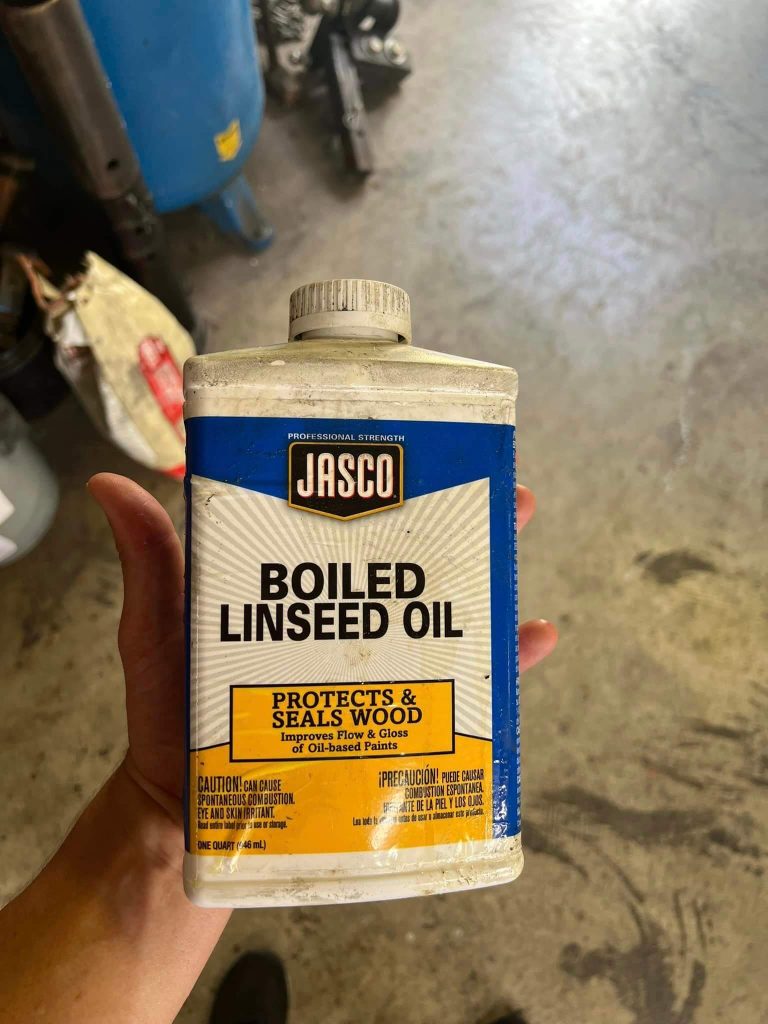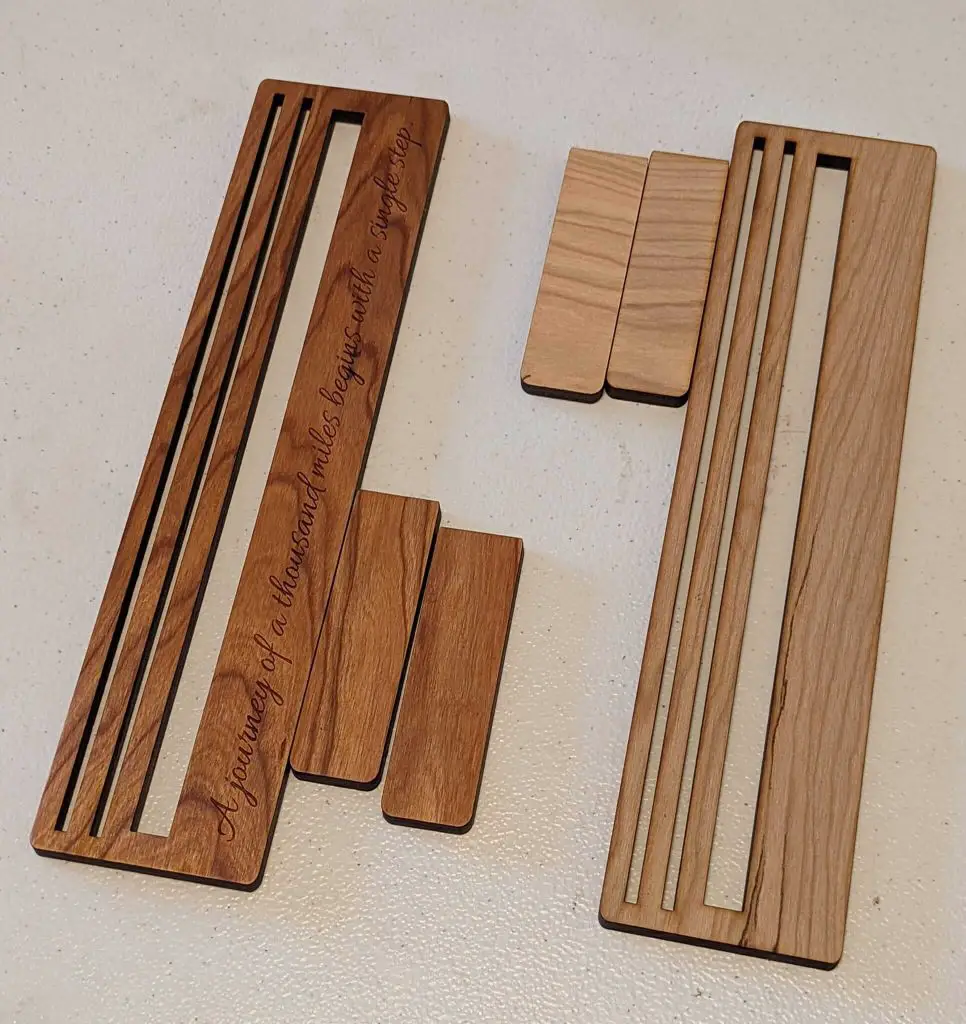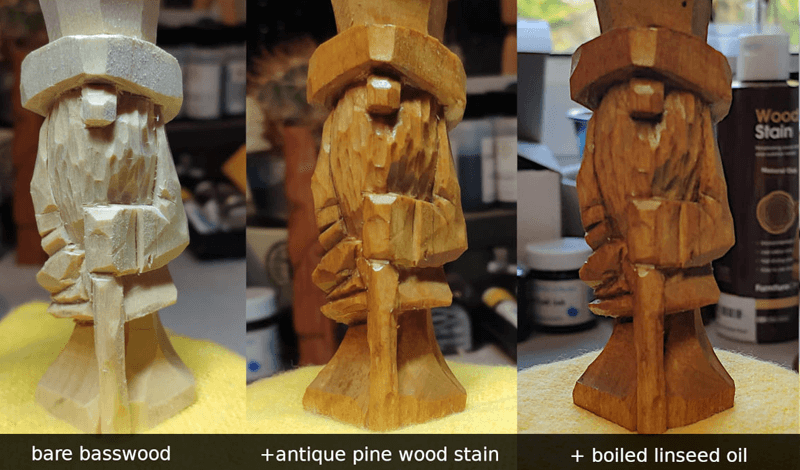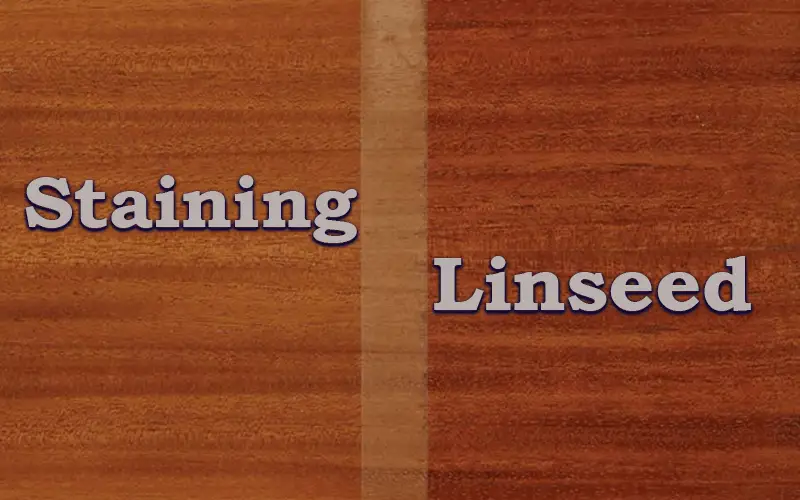Linseed oil is the mystique wood finish. Like any oil finish, linseed will do its best to exemplify the figure and grain while doing little to the natural color of the wood. While this is an admirable result there are times you wish that the wood had a different shade or tone.
Of course, stains are what come to mind immediately, but can you stain over linseed oil? Here is all you need to know.
Can you stain over linseed oil?
Staining over linseed oil is possible. How is this possible? Well, linseed is not the most protective wood finish there is. It doesn’t do much in terms of protecting the wood from scratches, water, or even stains. This is because it does not form a film as poly does.
The linseed simply soaks into the woods but does little to seal the pores. In this article, we will look at cool and simple ways you can stain your wood even after it’s rubbed with linseed oil.

How staining over linseed oil works
Staining over linseed oil is not overly complicated; anyone who cares to understand how oil and stains work can do it. To begin with, stains, especially the dye types, just like oils, penetrate the wood. Though technically speaking, according to Flexner, a finishing expert, all finishes will penetrate the wood.
What sets oils and stains apart is the fact that they do not form a film or hard cure after several coats like resin finishes do.

If a finish can’t build a thick top layer, it is susceptible to elements that distort wood. And it’s this weakness that allows us to stain an oiled wood. Therefore wood with an oil finish can still soak up stains even after the oil finish has completely dried.
The tricky part is how well and evenly your wood will soak the stain. This can, however, be negated by applying a gel stain. Gel stain does not penetrate much this accommodates more control producing even staining in problematic woods like cherry and pine.
My favorite way of staining an oiled wood
When I do my wooden frames with beautiful yet durable wood like African teak, I don’t like hiding the wood. I use linseed mostly since not much protection is needed, and it will leave the wood looking very rich with the grain popping. A few times, I have had to tint a frame to a client’s specifications, and I always use the same method. If you don’t know much about stains, check out this article.
I mix linseed with some artist oil paints. The mixture goes over the old linseed and soaks down slowly. I thin the linseed to make it lighter and add only a little color and buildup slowly till I get a satisfactory end.
Should you choose to go the DIY style, practice on a block of scrap wood to see the results and predict how it would turn on the project. Only proceed if you like the outcome of the scrap wood. Twitch the linseed and dye to change variations and see your options.
can you put linseed oil over stain?
Yes, you can apply linseed oil over stain. The process is not complicated just make sure you let each dry before subsequent layers. See the image below for how the artist first stained the pine wood and then later coated the carving with a layer of boiled linseed oil making the wood look richer.

Can you paint or stain over linseed oil?
As we have started in the previous section staining over linseed oil is possible and is not only doable via the two methods that we have discussed above but many more ways, some that which you can even find out for yourself through experimenting. But what about paints? Can you paint over linseed oil?
Yes, painting over linseed oil is quite possible. In fact, it’s doable with both water and oil-based paints. The only special requirement is for the linseed oil to be dry.
If not dry, it will cause adhesion problems with water-based paints or delusion with oil-based ones.
Can you add wood stain to linseed oil?
Adding wood stain to linseed oil is not only doable but has been done by manufacturers for decades. Most oil-based stains are just a blend of the stain and a combo of varnish and linseed oil as a binder.
You can stain your linseed oil with either pigment or dye. For more on this, check out this resource below
How to remove linseed oil from wood
If you choose to remove linseed oil from a piece of wood then you can d it by following these steps
- wipe dust and dirt from the wood
- pour some turpentine on a rag
- wipe the surface of the oiled wood with the rag letting the moist soak in the wood disintegrating the oils.
- wash off with warm soapy water and clean the wetness with a clean dry rag.
Can you stain the wood after oiling it?
When the wood is oiled, it can still be stained. As we have seen in the section above, oil finishes will not form a coat that can prevent the wood from soaking up stains.
In this article, we have looked at two ways you can change the color of wood even after it has been coated with a layer of an oil finish like linseed oil.


Very useful information. Thanks
What kind of finish is on your door?